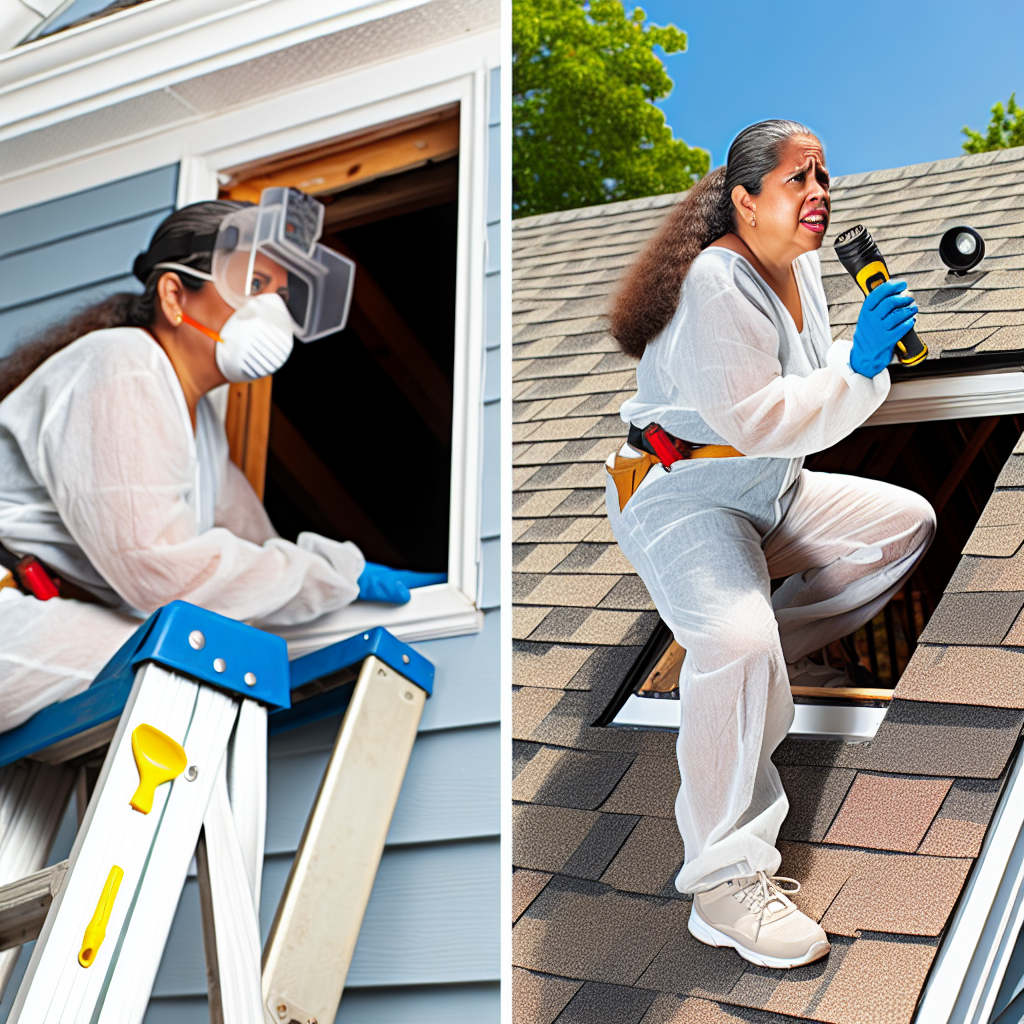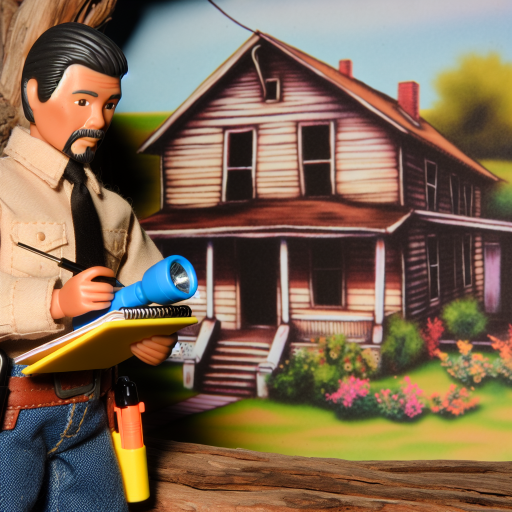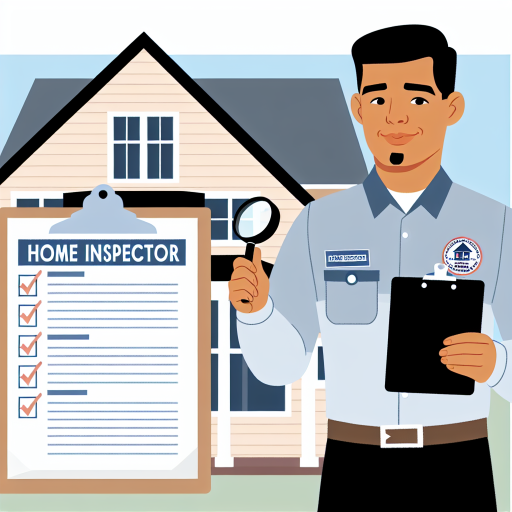Introduction to Home Inspections
Home inspections play a crucial role in the real estate process.
They help buyers make informed decisions about their investments.
One key aspect of a home inspection is evaluating the roof and attic.
This evaluation reveals significant information about the overall condition of the home.
Importance of Roof and Attic Evaluation
The roof protects the home from weather elements.
A well-maintained roof ensures structural integrity and safety.
Moreover, the attic influences energy efficiency.
Checking insulation and ventilation can prevent energy loss.
Additionally, issues in the attic can lead to more substantial problems.
For instance, leaks can cause mold and wood rot.
Thus, roof and attic evaluations are essential in preventing costly repairs.
Many homebuyers overlook these areas, but they should not be neglected.
Investing time in a thorough inspection can save money in the long run.
Ultimately, understanding roof and attic conditions enhances home-buying confidence.
Essential Tools for Roof and Attic Home Inspections
Basic Inspection Tools
Start with a sturdy ladder to access the roof or attic safely.
A flashlight helps illuminate dark areas in the attic.
Use a moisture meter to detect hidden water damage.
Keep a digital camera for documenting issues clearly.
A tape measure assists in measuring distances and heights.
Safety Equipment
Wear safety goggles to protect your eyes from debris.
Use gloves to safeguard your hands while inspecting.
A hard hat is crucial for head protection against falling objects.
Consider wearing a harness for added safety when on the roof.
Specialized Inspection Tools
A roof inspection drone can provide aerial views of hard-to-reach areas.
Infrared cameras detect heat loss and potential leaks effectively.
Employ binoculars for examining distant roof sections from the ground.
Ventilation meters assess attic airflow and efficiency.
Documentation Tools
Use a checklist to ensure you cover all inspection areas.
Download inspection software for efficient report creation.
Employ mobile apps to keep track of findings on-the-go.
Maintain a notebook for jotting down observations and notes.
Safety Precautions When Inspecting the Roof and Attic
Preparation Steps
Before beginning any inspection, ensure you have the right tools.
Always wear protective gear to prevent injuries.
This includes a hard hat, gloves, and non-slip shoes.
Check the weather forecast prior to your inspection.
Avoid inspecting during inclement weather conditions.
Setting Up a Stable Ladder
Use a sturdy, approved ladder for roof access.
Make sure the ladder is placed on a stable, level surface.
Consider having someone hold the ladder for added stability.
Always maintain three points of contact while climbing.
Assessing the Roof from a Distance
Start your inspection by looking at the roof from the ground.
Check for visible signs of wear and tear.
Look for missing shingles or visible sagging areas.
This step helps identify potential problems before climbing.
Checking Attic Conditions Safely
When entering the attic, ensure adequate lighting is available.
Use a flashlight if natural light is insufficient.
Take care to avoid stepping on non-supportive areas.
Check for signs of water damage or mold growth.
Handling Electrical Hazards
Be aware of any exposed wiring in the attic or roof area.
Do not touch anything you suspect could be electrically charged.
If you find electrical issues, consult a professional immediately.
Managing Pest Infestations
Look for signs of pests, such as droppings or nests.
Take precautions to avoid direct contact with pests.
If necessary, hire pest control experts to handle infestations.
Gain More Insights: Home Inspection Checklist For Examining HVAC Systems In Homes
Checklist for Roof Condition
Visual Inspection of Shingles and Materials
Begin your roof inspection by examining the shingles closely.
Look for missing or damaged shingles.
Check for any curling or buckling in the shingles.
Inspect the color and texture of the shingles.
Discoloration may indicate aging or damage.
Assessment of Roofing Materials
Consider the roofing materials used on your home.
Common materials include asphalt, metal, and tile.
Each type has unique signs of wear and damage.
For example, metal roofs may have rust spots.
Additionally, tile roofs can crack or chip over time.
Drains, Gutters, and Downspouts
Next, inspect the drainage systems on your roof.
Check gutters for debris and blockages.
Ensure that downspouts direct water away from the foundation.
Improper drainage can lead to serious water damage.
Signs of Leaks and Water Damage
Examine the interior ceilings and walls for any stains.
Look for water spots, which may indicate leaks.
Pay close attention to the areas around vents and chimneys.
These areas are common spots for water intrusion.
Flashings and Seals
Inspect the flashings around chimneys and vents.
Ensure seals are intact and not cracked or damaged.
Damaged flashings can lead to leaks and other issues.
Overall Roof Integrity
Lastly, assess the overall condition of the roof.
Check for sagging areas or dips in the roofline.
These could indicate structural problems.
A well-maintained roof should be level and stable.
Discover More: Home Inspection Checklist For First-Time Homebuyers In The USA
Assessing Roof Drainage
Importance of Gutters
Gutters play a critical role in roof drainage.
They collect rainwater and direct it away from the roof.
Check for any blockages that might impede water flow.
Look for signs of corrosion or rust in the gutter system.
Ensure that the gutters are securely attached to the house.
Downspout Functionality
Downspouts help channel water from gutters to the ground.
Verify that downspouts are correctly positioned.
Examine each downspout for clogs or damage.
Ensure that water flows freely through downspouts.
Check that downspouts extend away from the foundation.
Flashing Quality
Flashing prevents water from seeping into vulnerable areas.
Inspect flashing around chimneys, vents, and skylights.
Look for cracks or missing sections in the flashing.
Ensure flashing is properly sealed to prevent leaks.
Replace damaged flashing immediately to protect the roof.
You Might Also Like: The Ultimate Guide To Choosing A Realtor For First-Time Homebuyers
Attic Inspection: Insulation Levels and Quality
Importance of Insulation
Insulation plays a vital role in energy efficiency.
It helps maintain comfortable temperatures in your home.
Additionally, insulation reduces energy costs significantly.
Assessing Insulation Levels
Begin by checking the thickness of the insulation.
Proper insulation should be at least 12 inches deep.
Use a ruler or measuring tape for accurate measurement.
Consider the insulation type, as different materials have varying R-values.
Inspecting Insulation Quality
Look for signs of wear and damage in the insulation material.
Mold or moisture issues can indicate poor insulation quality.
Check for gaps where insulation may be missing.
Holes or compressed areas reduce the effectiveness of insulation.
Types of Insulation
Common insulation materials include fiberglass, foam board, and cellulose.
Each type has unique properties that affect performance.
Fiberglass is popular for its affordability and efficiency.
Foam board offers excellent thermal resistance but may cost more.
Recommendations for Improvement
If insulation levels are insufficient, consider adding more material.
Professionals can help select the right type for your home.
Regular inspection ensures optimal performance over time.
Investing in quality insulation can yield long-term savings.
Regular Inspections for Effective Insulation
Regularly assessing your attic’s insulation is crucial.
Proper insulation protects your home from temperature extremes.
Maintaining good insulation supports overall energy efficiency.
You Might Also Like: Understanding Property Taxes For First-Time Homebuyers In The USA

Identifying Signs of Moisture and Mold in the Attic
Visual Indicators of Moisture
Check for water stains on the ceiling or walls of the attic.
Look for dark streaks or patches that might indicate mold.
Inspect the roof for missing or damaged shingles.
Examine the venting systems for blockages that could trap moisture.
Notice if there are any condensation lines on rafters or walls.
Pay attention to the insulation; it should not feel damp or wet.
Odor Detection
Notice any musty or moldy smells when entering the attic.
Identify sources of bad odors, which often indicate mold growth.
Ensure that any unpleasant scents do not originate from the insulation material.
Temperature and Humidity Levels
Use a hygrometer to measure humidity levels in the attic.
Maintain humidity below 60% to discourage mold growth.
Check for temperature fluctuations that might lead to condensation.
Examine Ventilation
Ensure the attic has adequate ventilation to prevent moisture build-up.
Verify that vents are not blocked by insulation or debris.
Check that exhaust fans and roof vents operate properly.
Inspect for Pest Infestations
Look for signs of pests, as they can contribute to moisture problems.
Identify droppings or nests that might indicate rodent presence.
Consider sealing any entry points to prevent future infestations.
Addressing Issues
Act promptly to repair any leaks within the roof or walls.
Consider hiring a professional if mold is extensive or concerning.
Establish a regular maintenance routine to monitor the attic’s condition.
Common Roofing Issues to Look For
Identifying Leaks
Leaks can cause significant damage to your home.
Start by inspecting visible areas on your roof.
Check around chimneys, vent pipes, and skylights.
Water stains on ceilings indicate potential leaks.
Additionally, mold growth may signal moisture issues.
Evaluating Damages
Look for missing shingles during your inspection.
Damaged shingles can lead to water infiltration.
Curling, buckling, or cracked shingles require attention.
Inspect metal flashing for rust or corrosion.
Damaged flashing can create openings for water entry.
Assessing Wear and Tear
Age significantly influences roofing condition.
Most roofs last between 20-30 years.
Examine granule loss from asphalt shingles.
Granules protect the shingles from UV rays.
Persistent moss or algae may compromise roof integrity.
Signs of Contractor Issues
Inadequate installation can cause numerous problems.
Check for improper shingle overlap and alignment.
Poor workmanship often results in premature failure.
Request warranties to ensure quality craftsmanship.
Importance of Regular Maintenance
Regular inspections prevent costly repairs later.
Schedule maintenance at least twice a year.
It promotes longevity and efficiency of your roof.
During maintenance, address any issues immediately.
Proactive care helps avoid extensive damage down the line.
Final Evaluation
Summary of Findings
The inspection revealed several important details about the roof and attic conditions.
First, the roof showed signs of wear and aging.
This deterioration may limit its lifespan significantly.
Additionally, some shingles exhibited curling and missing sections.
Consequently, water infiltration could become a considerable risk.
Furthermore, the inspection highlighted potential venting issues in the attic.
Insufficient ventilation increases the risk of mold growth.
This can lead to serious structural problems.
Recommendations
To address the findings, immediate action is necessary.
First, replace damaged or missing shingles.
This will help prevent further water damage.
Next, consider improving attic ventilation.
Installing additional vents can enhance airflow.
Additionally, routine inspections should occur regularly.
These inspections can catch issues early before they escalate.
Finally, budget for professional maintenance every few years.
This ensures the roof remains in optimal condition.
Additional Resources
What should I do during a home inspection? I’m the buyer : r …
What are some red flags to look for when buying a house for the first …




